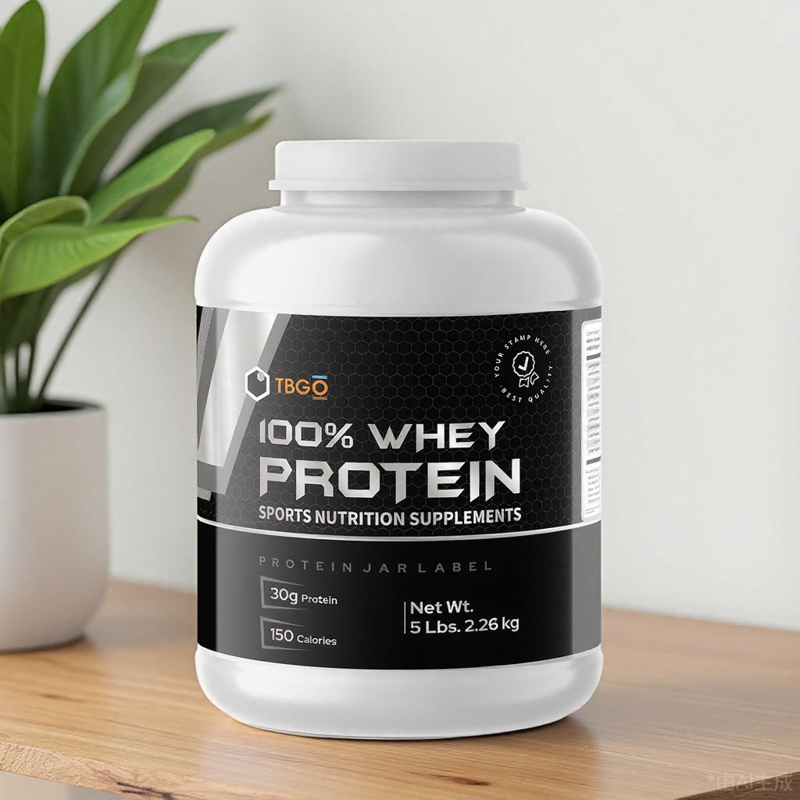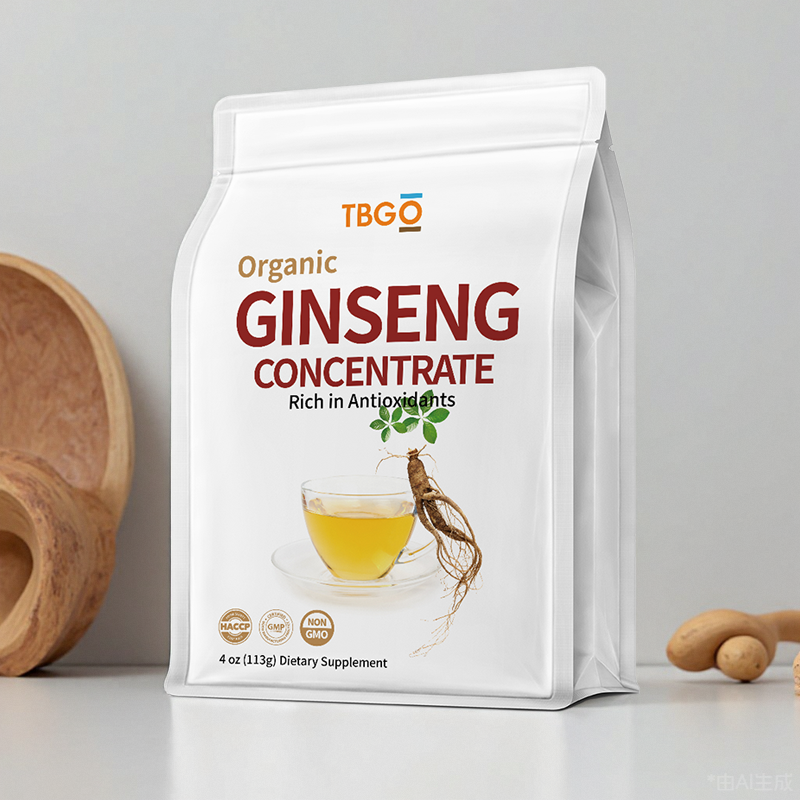עליית אבקת סויה עתיקה בפורטיין בתזונה צמחונית
שינוי הצרכנים לכיוון אורח חיים טבעוני וצמחוני
אנשים ברחבי העולם נעשים יותר לעבר הרגלי אכילה מבוססי צמחים, מה שבאמת דחף את השוק של אבקת סויה מלאה בחלבון. כ-43% מהאנשים בצפון אמריקה מורידים את צריכת הבשר בימים אלה. אנשים רבים מודאגים מטיפול בעלי חיים בחוות תעשייתיות, בעוד אחרים פשוט מבינים שסויה למעשה מחזיקה די טוב מבחינה תזונתית מול מוצרי בשר. לכן כל כך הרבה טבעונים פונים לסויה כשהם צריכים משהו אחרי אימון או רוצים תחליף ארוחה מהירה. הקהל הפלקסיטריאני מהווה בערך שני שלישים מכל הקניות בניסיון למזון מבוסס צמחים, מה שהופך את אבקת הסויה לנקודת התחלה נהדרת לכל מי שמנסה להפסיק את חלבונים בעלי חיים מסורתיים מבלי להפוך טבעוני לחלוטין בין לילה.
סויה כמקור מוביל של חלבון צמחי
כשזה מגיע לחלבונים צמחיים, אבקת סויה באמת זוהרת. יש לו מגוון מלא של חומצות אמינו, שמכילים כ-6.8 גרם של לואיצין לכל 100 גרם, בנוסף, הוא מלא ברזל וקלסיום, משהו שרבים מפספסים כשהם עוברים ממוצרי בעלי חיים לדברים כמו אפונה או חלבון אורז. ציון PDCAAS, שממדד כמה טוב הגוף שלנו יכול לעכל ולהשתמש בחלבון, עומד על 1.0 בדיוק כמו ביצים. זה אומר שגופנו סופג את רוב מה שיש, מה שהופך סויה יעילה למדי לבריאות הכללית. סויה היא אחת המזון הצומח הנדיר הזה המכיל את כל תשעה חומצות אמינו החיוניות ביחסים טובים מדי. לכן ספורטאים ואנשי מקצוע בתחום הבריאות פונים לעתים קרובות למוצרי סויה כאשר הם מחפשים אפשרויות תזונה מבוססות צמחים איכותיות.
צמיחה בשוק: דומיננטיות של חלבון סויה בצפון אמריקה ובאירופה
אזור צפון אמריקה נמצא כיום בחזית השוק העולמי של חלבוני סויה, עם כ-38% מהחלק הכולל. הדומיננטיות הזו באה בעיקר ממניסיונות ממשלתיים כמו אלה שתומכים על ידי USDA אשר הוסיפו אבקת סויה לארוחות הצהריים בבית הספר ברחבי המדינה. באירופה, גרמניה וצרפת בולטות כמתרבות מרכזית לצמיחת השוק, דוחפות קדימה קצב צמיחה שנתי מרכזי מרשים של 14% עבור מרכיבי סויה אורגניים מאז תחילת 2021. כשזה מגיע למספרים של קמעונאים, מוצרי סויה גם עושים גלים. מכירות של שייקס סויה ומוצרי מאפה העשירים בסויה זינקו בכמעט 27% בהשוואה לשנה שעברה, והביסו את חלופות השועל והשלל בתהליך. נראה כי הצרכנים מאמינים יותר ויותר במה שסויה יכולה להציע מבחינה תזונתית תוך שהיא עדיין מספקת טעם ופעילות טובים במזון יומיומי.
התאמת אבקת סויה עתירה בחלבון עם מגמות תווית נקייה
שיטות מבוססות מים לבידוד חלבוני סויה שומרות על כ-92% מבנה החלבון המקורי שלם תוך התפטרות מהסולחים ההקסנים המציקים. זה מתאים גם לתנועה של תווית נקייה, מכיוון שחקירות מראות שכ-60% מהקונים מחפשים מוצרים עם תווית של מינימום עיבוד בעת רכישת תוספי מזון. חברות בימים אלה מערבבות את אבקת סויה העשירה חלבון עם דברים כמו קינואה, זרעי צ'יה, ואוכלים אחרים שנקראים "סופר-אוכלים". המטרה פשוטה באמת, לארוז יותר חומרים מזינים בכל מנות בלי לפנות לדברים מלאכותיים. רוב האנשים רוצים לדעת בדיוק מה הם אוכלים בכל מקרה, והם מעדיפים שמקורות המזון שלהם יהיו קרוב ככל האפשר לטבע.
דחפים ביקוש גלובלי וקיום
הייצור של אבקת סויה משתמש ב-76% פחות מים בהשוואה למוצרי חלבון הממתקים, ומפחית את הפליטות ב-87% בערך. ברחבי מדינות אזור אסיה פסיפיק, יש עניין גדל באבקת סויה לאחרונה, כי היא עוזרת להתמודד עם מחסור בחלבון תוך הפחתת התלות במפעלי גידול בעלי חיים רעבים לאנרגיה. חקלאים ברזילאים ראו כמה תוצאות די מרשימות מטכניקות חדשות שהם אימצו במהלך השנים האחרונות. יבול חלבון על פני דונם עלה ב-40% מאז 2018, מה שהופך את הגדלת הייצור לקלה הרבה יותר. התקדמות מסוג זה באמת מחזקת את המוניטין של סויה כגידולים ידידותיים לסביבה ופרודוקטיביים שיכולים להאכיל אנשים רבים מבלי לזרוק משאבים.
יתרונות תזונתיים של אבקת סויה עתירה בחלבון
חלבון סויה ופיתוח שרירים: פרופיל שלם של חומצות אמינו
אבקת סויה עמוסת חלבון רב מספקת כ-36 גרם של חלבון מלא ב-100 גרם בלבד, לואיסין הוא אחד מבני הבניין החשובים ששל שרירינו צריכים לגדול כראוי. מחקר שפורסם בשנה שעברה בכתב העת Frontiers in Nutrition הראה משהו מעניין גם כן. המחקר בדק מקורות רבים והגיע למסקנה שפרוטאין סויה פועל בערך באותה הדרך כמו ממתן בשר כשיש צורך בבניית מסת שריר, במיוחד אם נאכל בתוך שעתיים בערך אחרי האימון. זה הופך סויה לבחירה מוצקה לכל מי שמאכל תזונה מבוססת צמחים אבל עדיין רוצה לשמור או אפילו להגדיל את כוח השרירים שלו באמצעות פעילות גופנית קבועה.
בריאות לב וכלי דם וניהול כולסטרול
צריכת 25 גרם של אבקת סויה עתירה ב-פרוטאין יכולה להפחית את כולסטרול LDL ב-10% ו-15% תוך שיפור יחסי HDL. האיזופלבונים בסויה משפרים את גמישות העורקים, ותוכן ארגינין שלה תומך בלחץ דם בריא. גורמים מפתח בהפחתת הסיכון לסקלת העורקים, במיוחד בקרב אוכלוסיות מזדקנות.
סיכול וזמינות ביולוגית בהשוואה לחלבונים צמחיים אחרים
אבקת סויה יש עיכול די מרשים בסביבות 92%, אשר מכה את חלבון האווז ב-77% ופרוטאין האורז יושב רק 65% על פי מחקרים קליניים שונים. מה שממחיש את סויה הוא איזון החומצות האמינו שלה, המאפשר כ-94% של שמירה על חנקן, בערך 20 נקודות אחוז טובות יותר ממה שאנו רואים עם גלוטן חיטה. זה אומר שהגוף משתמש למעשה ברוב מה שנצרך לשיקום שרירים ולצמיחה. יתרון נוסף של סויה על אופציות אחרות מבוססות צמחים הוא שהיא יוצרת חלבון מלא לבדה מבלי להזדקק למזון נוסף כדי להשלים אותה. זה מבטל את הצורך לשלב מקורות שונים במהלך הארוחות, משהו שיכול לפעמים לגרום לבעיות בטן בעת אכילת קמחונים מסוימים עשירים בסיבים.
יישומים במוצרי מזון פונקציונליים ומעוצבים
שילוב אבקת סויה עשירה בפרוטאין במוצרי אפייה וצרכים חטיפים
חברות מזון רבות פונות כיום לפוטר סויה עתיר חלבון, כי הוא מגביר את התזונה מבלי לקלקל את המרקם שציפו לו אנשים. קחו מוצרי מאפה, למשל, גרסאות העשירות בסויה מכילות 34 אחוזים יותר חלבון בהשוואה למוצרי רגילים, אך עדיין שומרות על תחושה לח ומרכיב פירורים טוב שרוב הצרכנים מחפשים. המגמה מתאימה בדיוק למה שנקרא מזונות פונקציונליים, קטגוריה שבה סויה מהווה כמעט 28.6% מכל השימושים, על פי דו"חות התעשייה. מבט בשוק המזנון ברחבי צפון אמריקה מראה אפשרויות מבוססות צמחים כמו צ'יפס חלבון וברדי אנרגיה שונים מהווים כ-18% מהמוצרים החדשים המגיעים למסדרי המכולת לאחרונה. הסטטיסטיקה הזו מצביעה על כך שאנחנו רואים תנופה אמיתית מאחורי בחירות תזונתיות בריאות יותר שלא מקריבים טעם או סיפוק.
חדשנות במזון פונקציונלי מבוסס סויה לצרכנים מודעים לבריאות
פרופיל האמינו חומצי של סויה הופך אותו לאידיאלי לתזונה רפואית ולפתרונות תזונתיים ממוקדים. מוצרים מתעוררים כוללים:
- משתיקים מחליפי ארוחות עם 25 גרם חלבון סויה לכל מנות
- דגנים העוצב עם איזופלבונים, אשר הוכחו לתמוך בצפיפות העצם
- אבקת סויה מופחתת עם 42% יותר ברזל ו-29% יותר זנק זמין ביולוגי
מחקר 2025 ב גבולות בתזונה הראו כי העשרה בסויה משפרת את רמות ההמוגלובין ב-53% באוכלוסיות עם מחסור בברזל, ומדגישה את הפוטנציאל שלה בתזונה לבריאות הציבור.
תבניות מוצרים ללא גלוטן, ללא חלב ובלתי קיימא
אבקת סויה עתירה על חלבון עתירה שלוש דרישות צרכנים עיקריות:
- אפשרויות ידידותיות לאלרגן : 92% ממוצרי סויה חדשים נושאים אישור ללא גלוטן
- קדרון פחמן נמוך : חלבון סויה מייצר 67% פחות פליטות מאשר בידוד חלבון החלבון
- יעילות בשימוש במים : דורש רק 5% מהמים הנדרשים לייצור חלבון שקדים שווה ערך
השפעיות הזו מאפשרת למותגים לעמוד בסטנדרטים של תווית נקייה תוך כדי השגת ריכוז חלבון של עד 90% בבידודיוצאים על חלבונים של אפונה ואורז הן בטוהר והן בפונקציונליות.
טכנולוגיית עיבוד ושמירות תזונתית של חלבון סויה
מסויה לפוטר: ייצור של בידוד חלבון סויה
הייצור של אבקת סויה עתירה בחלבון מתחיל בהסרת הקליפות מהסויה הגסה והסרת תכולת השומן כדי שנוכל להגיע לחומר הטוב - החלקים העשירים בחלבון. כמה טכניקות די מתקדמות נכנסות לתחום, כמו שימוש בחומרים אלקליים לפיקוח ואחריהם תהליכי ריסקת חומצה זה מרכז את תכולת החלבון בפועל עד 90 עד אולי אפילו 95 אחוז בהתאם לתנאים. ואז יש את שלב שטיפת האלכוהול הזה, שמפטר מסוכרים מסוימים שגורמים לבעיות קיבה אצל חלק מהאנשים, ואחריו יבש עדין בטמפרטורות נמוכות יותר כדי לשמור על כל המאפיינים היתרוניים שלם. מה שיוצא מכל התהליך הזה הם בידוד חלבון סויה המכונה SPI. יש להם כ-93% סיכול כאשר נבדק במעבדה, מה שאומר שרוב החלבון הזה למעשה נספג על ידי הגוף שלנו, מה שהופך אותם מאוד יעילים מנקודת מבט תזונתית.
שמירה על איכות החלבון ושמירה על חומרים מזינים במהלך עיבוד
עיבוד תרמי בהחלט משחק תפקיד בהסרת מעכבי הטריפסין המציקים, אבל אנחנו צריכים להיזהר כי יותר מדי חום למעשה מקטין את ליזין הזמין בכ-12 עד 18 אחוזים. למרבה המזל, יש אפשרויות אחרות מלבד רק לחמם את הדברים. שיטות כמו סינון מטרום וטכניקות דיג שונות הפכו לאחרונה למגמות, מגיעות לציונים מרשימים של IVPD בין 89 ל-93 אחוזים תוך שמירה על כל החומרים המזינים העדינים הללו שלמים. כאשר בידוד חלבון סויה מתבצע נכון, הוא שומר על ציון העליון של 1.0 בסולם PDCAAS בדיוק כמו חלבון חלבונים טוב ישן עושה. והנה משהו מעניין: עם טיפול נכון, SPI שומרת על 23% יותר ברזל מאשר מה שאנחנו רואים עם גישות תרמיות מסורתיות. זה עושה הבדל אמיתי עבור ערך תזונתי.
איזון בין עיבוד תעשייתי לבין ציפיות של תווית נקייה
אנשים רוצים דברים פשוטים בימים אלה, ומחקרים מראים שכ-שני שלישים מחפשים מוצרים עם רשימת מרכיבים קצרה בעת הקניות. חברות מזון גדולות החלו להשתמש באנזימים כדי לעזור להוציא מהן מהצמחים, וקטלו את השימוש בכימיקלים קשים כמעט בחצי. הם גם פונים לשיטות מכאניות במקום להוסיף כל מיני חומרים מלאכותיים למוצרים שלהם. כמה יצרנים עכשיו מרססים את התערובות שלהם בשימוש בלסיטין של כפסת שמש כחומר עוזר טבעי. זה מאפשר להם להרכיב מוצרים עם רק שלושה עד חמישה פריטים המפורטים על החבילה, ובכל זאת לשמור על יותר מ -90 אחוז תכולת חלבון טהור. שינויים אלה לא רק טובים לאנשים מודעים לבריאות המחפשים שקיפות, הם גם עוזרים למותגים להישאר תחרותיים בשוק הצמחי המפוצץ של היום שבו הצרכנים מצפים הן לאיכות והן לכנות.
שאלות נפוצות
מה היתרונות העיקריים של אבקת סויה עתירה בחלבון?
אבקת סויה עתיקה בפלוטין מציעה מגוון מלא של חומצות אמינו חיוניות, מה שהופך אותה אידיאלית לצמיחה ולחזור שריר. הוא גם תומך בבריאות הלב והקרדיווסקולרי על ידי הפחתת כולסטרול LDL ושיפור גמישות העורקים. בנוסף, הוא מאוד מתעכל וחברתי לסביבה בהשוואה למקורות חלבון אחרים.
איך אבקת סויה משתווה לחלבונים אחרים מבוססי צמחים כמו אפונה ואורז?
אבקת סויה יש עיכול וזמינות ביולוגית גבוהות יותר מאשר חלבון אגוזים ואורז. הוא מציע פרופיל של חומצות אמינו מלא, כלומר הוא לא דורש מזונות תוספים לתזונה מלאה. אבקת סויה מספקת גם ריטנציה טובה יותר של חנקן אשר מסייעת בהתאוששות ובצמיחה של השרירים.
האם אבקת סויה מתאימה לאנשים עם מגבלות תזונתיות?
כן, אבקת סויה היא ללא גלוטן וחסרת מוצרי חלב, מה שהופך אותה מתאימה לאנשים עם מגבלות תזונתיות. בנוסף, מוצרים חדשים מבוססי סויה נושאים לעתים קרובות אישור עבור אפשרויות ידידותיות לאלרגן ומייצגים חלופה עם טביעת רגל פחמן נמוכה יותר למקורות חלבון אחרים.
מה ההשפעה הסביבתית של ייצור אבקת סויה?
ייצור אבקת סויה דורש הרבה פחות מים ואנרגיה מאשר מקורות חלבון אחרים, ומפחית את פליטות הפחמן ומקדם קיימאות. שיטות חקלאיות במדינות כמו ברזיל השתפרו כדי להגדיל את תשואה החלבון תוך שמירה על שימוש מינימלי במשאבים.






